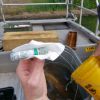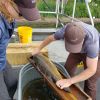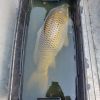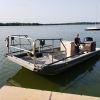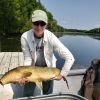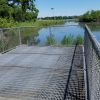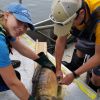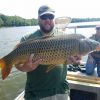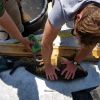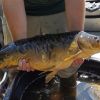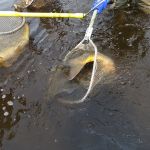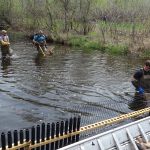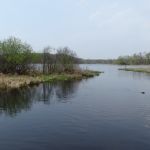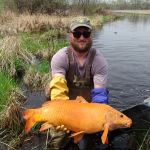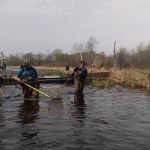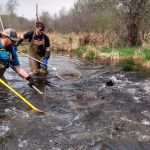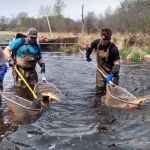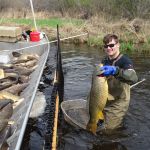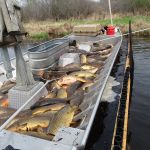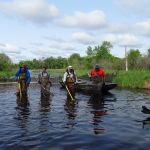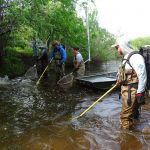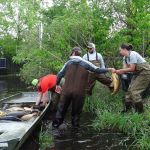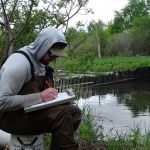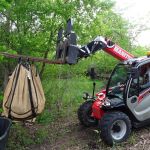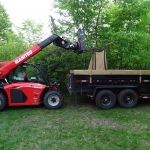Pleasant Lake Carp Removal
Quick Facts:
At a max of 58 ft deep, Pleasant Lake is one of two deep lakes in the VLAWMO watershed. The other is East Vadnais Lake, which has the same max depth.
Pleasant Lake is listed as impaired on the State impaired waters list. It receives water from Deep Lake, Charley Lake (which receives from the Mississippi River), and watershed drainage. Click here for a look at Pleasant Lake's water quality status.
Common carp are an invasive species in Minnesota, brought to the U.S. from Germany in 1877. They were intentionally introduced through government programs at the request of early settlers who desired fish from their homelands. Common carp were raised in ponds in Washington D.C., and shipped across the country by train to become widely established.
Funding:
VLAWMO capital improvement funds.
Reason for the project:
Measures to reduce the Pleasant Lake carp population actually began many years ago. A fish barrier at Wilkinson Lake was put in place by North Oaks Company in the 1990s, to reduce the seasonal spawning migration from Pleasant to Wilkinson. There is evidence that the barrier has been effective at preventing survival of young carp. In a healthy and growing carp population, we would expect to see fish in many age classes including young, young adult, and adult fish. Initial Pleasant Lake surveys, however, show that the carp population is composed primarily of large adults. This bodes well for future carp management steps. If the population is primarily composed of large adults and few young are being successfully produced, removal of adults should allow for sustainable water quality gains.
Implementation:
There are three steps to understanding carp populations and managing them: 1) Calculating current biomass or amount of carp in the lake. This involves electroshocking surveys with tagging, 2) Understanding movement patterns and especially where carp go for spawning, and 3) Removing enough carp to reach the management threshold. The management threshold for common carp is 100 kg/ha (90 lbs/acre). This is the target biomass level at which we would expect to see measurable improvements in water quality. Biomass in Pleasant Lake prior to removal was 273 kg/ha, which is nearly three times the management threshold.
Telemetry radio tracking was begun in the summer of 2021. Carp were implanted with transmitters to allow VLAWMO staff to track their movements and provide information to inform harvest efforts.
Results:
Removals were completed during spring 2022 and 2023. A new barrier was constructed during 2023 to improve removal success. A spring removal is underway in 2024.
The results of this effort is reduced population levels that allow for improved water quality. This program follows with the efforts of VLAWMO's watershed neighbors Ramsey Washington Metro Watershed District (RWMWD) and Rice Creek Watershed District (RCWD).


